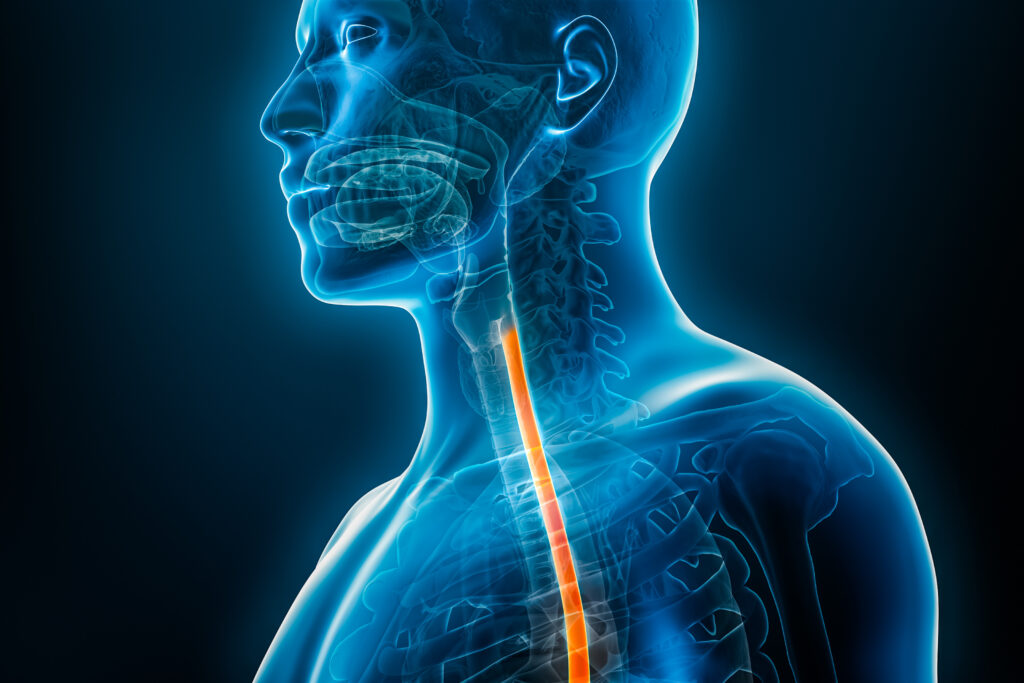Hepatocellular carcinoma (HCC) is the seventh most frequently occurring cancer in the world and the second most common cause of cancer mortality.1 The incidence of HCC has been growing rapidly, with a 75% increase in newly diagnosed cases from 1990 to 2015.2 Approximately 90% of HCC cases are associated with an underlying aetiology, most frequently chronic viral hepatitis (B and C) infection, alcohol intake and aflatoxin exposure.3 The management of early-stage HCC involves surgical resection. However, only 10–30% of patients with HCC are eligible for surgery, and despite advances in many aspects of HCC treatment, including liver transplantation and locoregional therapies, >70% of patients with HCC present with advanced disease and will not benefit from these treatment modalities.4,5 Consequently, systemic therapies are the only viable options for the majority of patients with advanced or recurrent disease.
For more than a decade, sorafenib, a multikinase inhibitor, was the only systemic therapeutic option that had demonstrated improved overall survival (OS) in advanced HCC and received US Food and Drug Administration approval in 2007.6,7 In the last 5 years, multiple therapies have been approved in the first-line setting, including another multikinase inhibitor, lenvatinib; a combination of programmed death-1 and vascular endothelial growth factor, atezolizumab plus bevacizumab and a combination of programmed cell death ligand 1, and cytotoxic T lymphocyte-associated antigen 4 inhibitor, durvalumab plus tremelimumab.8–10 Results from clinical trials evaluating the combination of immunotherapy and tyrosine kinase have been disappointing so far. However, until recently, the impact of systemic therapy on long-term survival in patients with advanced HCC remains unclear.
Immunotherapy has revolutionized cancer treatment by using the immune system to selectively target and enhance the effectiveness of therapies. In HCC, it has been shown that an immune-suppressed environment within the tumour, influenced partly by activated immune checkpoint signalling pathways, plays a role in causing resistance to treatments.11 This mechanism provides a rationale for evaluating immunotherapy in HCC. In patients with unresectable HCC (uHCC), a phase II study (A Study of Durvalumab or Tremelimumab Monotherapy, or Durvalumab in Combination With Tremelimumab or Bevacizumab in Advanced Hepatocellular Carcinoma. ClinicalTrials.gov identifier: NCT02519348) combining tremelimumab with durvalumab and durvalumab monotherapy demonstrated durable objective responses and promising OS, along with a favourable safety profile.12 Following this, a phase III trial (Study of Durvalumab and Tremelimumab as First-line Treatment in Patients With Advanced Hepatocellular Carcinoma HIMALAYA. ClinicalTrials.gov identifier: NCT03298451) was designed to evaluate tremelimumab plus durvalumab and durvalumab monotherapy versus sorafenib in patients with advanced HCC who had not previously received systemic therapy.13 In this article, we provide an overview of the HIMALAYA study and summarize the key findings of the trial, including recently reported long-term survival data.
HIMALAYA trial
The HIMALAYA trial is a randomized, open-label, sponsor-blind, multicentre, global phase III trial, which evaluated patients with advanced HCC who did not receive any prior systemic treatment.13 The patients were assigned to receive either tremelimumab plus durvalumab (STRIDE regimen) or durvalumab or sorafenib. As part of the STRIDE regimen, tremelimumab was administered as a single dose along with durvalumab as a priming dose. Following cycle 1, patients were treated with durvalumab for only 4 weeks. A total of 1,171 patients were randomly assigned to one of the three treatment arms: STRIDE (n=393), durvalumab (n=389) or sorafenib (n=389). The primary outcome for this trial was median OS, with several secondary outcomes, including progression-free survival (PFS), time to progression, response rate, disease control rate, response duration, patient-reported outcomes, safety profile and the presence of antidrug antibodies (ADAs). OS was also assessed at different time points. Inclusion criteria mandated that patients must have histologically confirmed HCC, received no prior systemic therapy and were ineligible for locoregional therapy. Patients were required to have Child–Pugh A score at the time of the study entry. Patients with ascites, main portal vein thrombosis or coinfection with hepatitis B and C viruses were excluded.13
Baseline characteristics were consistent across all groups, with the majority of patients being male (83%). Approximately 40% of the trial enrolment were from Asia. Hepatitis B and C infections were noted in 30% of the patients, and the rest had non-viral aetiology as the cause of cirrhosis. More than half of the patients had extrahepatic spread suggestive of metastatic disease. The trial met its primary endpoint with a median OS of 16.4 months (95% confidence interval [CI], 14.2–19.6 months) with the STRIDE regimen compared with 13.8 months (95% CI, 12.2–16.1) with sorafenib (hazard ratio, 0.78; 95% CI, 0.66–0.92; p-value: 0.0035). The median PFS was similar in the two arms (3.8 versus 4 months). Objective response rates were higher with the STRIDE regimen (20.1%) than with sorafenib (5.1%). The median duration of response was 22.3 and 18.4 months in the immunotherapy group and the sorafenib group, respectively. Furthermore, the OS rates at 18, 24, 36 and 48 months for the STRIDE regimen were 48.7, 40.5, 30.7 and 25.2%, respectively, whereas the corresponding rates for the sorafenib group were 41.5, 32.6, 20.2 and 15.1%, respectively. There was an obvious improvement in OS; however, not in the PFS. This suggests that the effect of immunotherapy on survival may be independent of PFS and primarily due to improvement in long-term survival in patients who initially benefit from this combination regimen. It was also notable that monotherapy with durvalumab was noninferior to sorafenib for OS. The STRIDE regimen resulted in a more favourable benefit–risk ratio compared with multiple doses of tremelimumab plus durvalumab and durvalumab monotherapy in a previous trial, and the data from the phase III HIMALAYA study support that the novel STRIDE regimen offers a well-tolerated and effective treatment option for patients.13
In the exploratory analysis, the study team reported data on ADAs in the HIMALAYA trial. The incidence of ADAs to durvalumab, at any time point during the treatment, in the STRIDE arm and in the single-agent durvalumab arm was 8.2 and 7.1%, respectively. In the STRIDE arm, ADAs to tremelimumab were found in 15.9% of the patients, and 4.4% had neutralizing antibodies to tremelimumab. Moreover, 11% of the patients developed ADAs to tremelimumab following treatment. There was no difference in grade 3 or 4 adverse events (AEs) in patients who were ADA positive compared with those who were not. Although the numbers are small and it is difficult to make definitive conclusions, there was no difference in survival with respect to the development of ADAs.14
Safety profile
Safety analyses encompassed patients who had received at least one dose of tremelimumab plus durvalumab or sorafenib. AEs, irrespective of their attribution, were observed in 97.4 and 95.5% of patients receiving the STRIDE regimen and sorafenib, respectively. Grade 3 or 4 AEs were similar in the two groups (50.5 versus 52.4%). Numerically, AEs necessitating the treatment discontinuation were lower in patients receiving dual immunotherapy agents compared with sorafenib (13.7 versus 16.8%). There was no treatment-related bleeding noted with the STRIDE regimen, which is important in patients suffering from cirrhosis with varices. Immune-mediated AEs (imAEs) requiring treatment with high-dose glucocorticoids were reported in 20.1% of the patients, and only 5.7% of the patients required treatment discontinuation. The most common imAEs included hypothyroidism, hepatic events, diarrhoea/colitis and dermatitis/rash. Lastly, treatment-induced anti-durvalumab antibodies, detected post-baseline only, were found in 3.1% of patients receiving STRIDE with neutralizing antibodies detected in 1.7% of the patients. The importance of developing neutralizing antibodies remains unclear.
Lau et al. presented the data related to the correlation between imAEs and clinical outcomes from the HIMALAYA study receiving the STRIDE regimen.15 The median OS in patients experiencing imAEs was 23.2 months compared with 14.1 months in patients without imAEs. OS rates at 3 years were also higher in patients with imAEs (36.2 versus 27.7%). It is uncertain at this time if imAE is a true predictor of efficacy. It is possible that patients who are living longer have a higher probability of experiencing imAEs, especially late toxicities including hypothyroidism.
4-year updated analysis
In 2023, an updated analysis of the HIMALAYA study provided a comprehensive evaluation of long-term OS and safety outcomes associated with the STRIDE regimen in comparison with sorafenib. The median duration of follow-up was 49.1 months in the tremelimumab plus durvalumab arm and 47.3 months in the sorafenib arm. The findings confirmed previously reported 18-, 24- and 26-month OS rates. Remarkably, 4-year OS rates revealed substantial improvements, with the STRIDE group reaching 25.2% compared with 15.1% in the sorafenib group. The study observed that long-term survivors encompassed participants from all clinically relevant subgroups, indicating that no single subgroup drove the long-term survival outcomes. In patients who experienced stable disease (39.9%) or responses (20.1%), the 3- and 4-year OS rates were 44.6 and 36.2%, respectively. Furthermore, the updated data cut-off revealed no new serious treatment-related AEs, reaffirming the safety profile of the interventions under investigation.16
It is important to emphasize that there are currently no other phase III studies in HCC that provide data on OS at the 3- or 4-year mark with a median follow-up of almost 4 years. Moreover, it is worth noting that historically only a mere 7% of patients diagnosed with advanced liver cancer manage to survive for 5 years, underscoring the exceptional significance of the long-term survival data from the HIMALAYA trial. Remarkably, these data reveal that one in four patients who received the STRIDE regimen was still alive at the 4-year milestone.
Conclusion
In conclusion, the extended analysis of the phase III HIMALAYA study in uHCC reaffirms the significant and enduring OS benefit conferred by STRIDE when compared with sorafenib, building upon the promising results of the primary analysis. With an impressive 4-year follow-up, this study presents unprecedented 3- and 4-year OS rates, underscoring the STRIDE regimen’s potential as a groundbreaking treatment option in uHCC. For the first time, a phase III trial reported long-term survival in a significant proportion of patients with advanced HCC. According to the findings from the HIMALAYA trial, patients who achieve disease control with the dual immunotherapy agents on their initial scans have a significantly improved likelihood of surviving for 3 or even 4 years. This underscores the critical role of disease control in predicting extended survival outcomes for these patients. These findings underscore the enduring benefits of STRIDE in a diverse global population of patients with uHCC, solidifying its position as a valuable therapeutic option in the management of this challenging condition.












